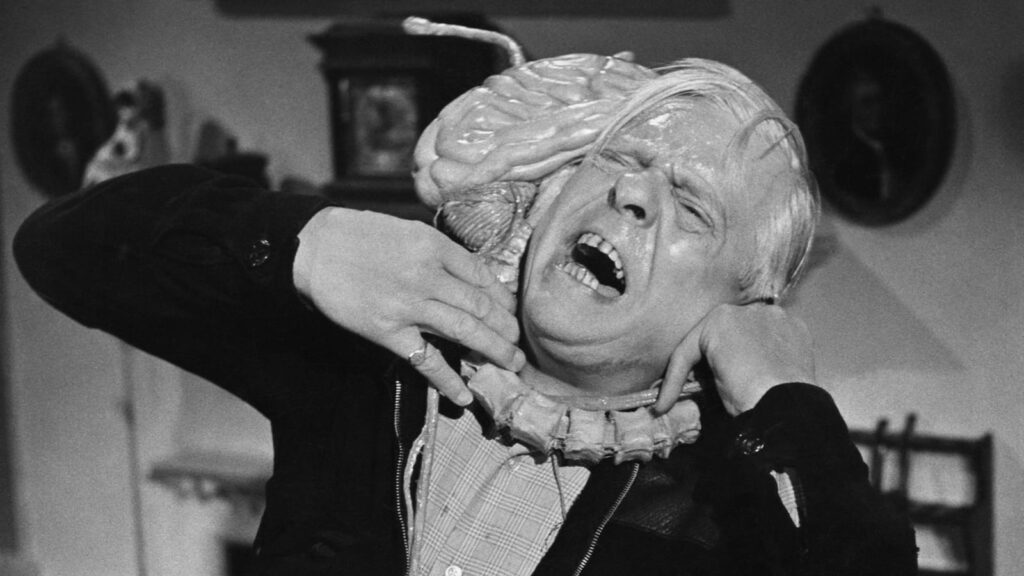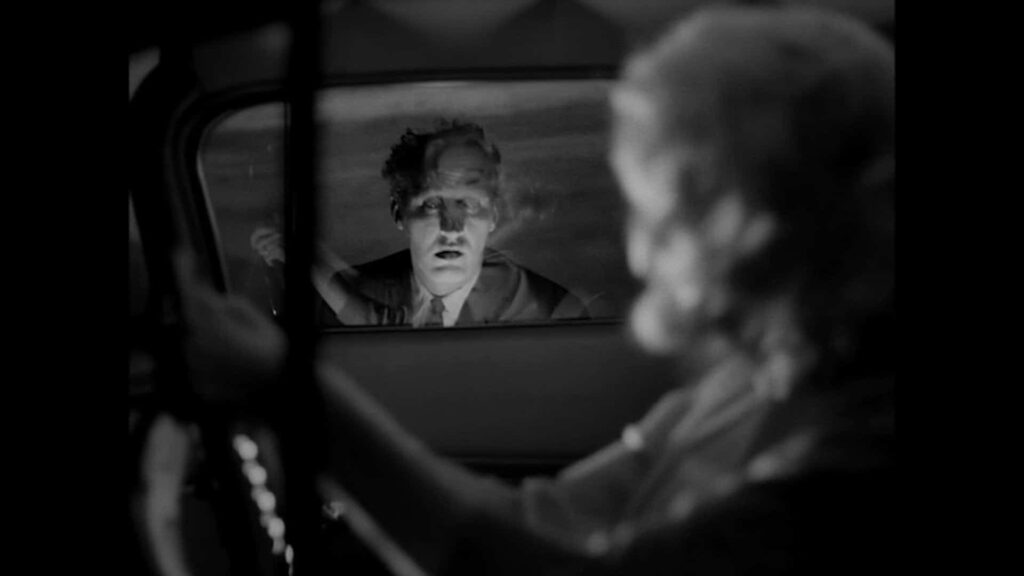Halloween 2021
For my Halloween weekend viewing, I watched three low-budget midcentury grindhouse classics: Fiend Without a Face (1958), The Tingler (1959) and Carnival of Souls (1962). Watching all three, in that order, all in a short period of time, was both instructive and transformative, and reminded me that things like plot, performance and production value are not the only valid measurements of a movie’s quality.I’ve never been one to watch “bad” movies just to laugh at them, I’ve always figured that there are plenty of great movies to watch, why watch bad movies just to laugh at how bad they are? But now I watch flawed productions like these not to laugh at them but because they present cinematic ideas that, for a whole host of different circumstantial reasons, fall outside the mainstream. One can watch a movie like Fiend Without a Face and get plenty of enjoyment from it, just by looking at what the filmmakers were trying to do, and what they accomplished despite — or because of — the limitations of their budget and schedule (and talents). So, in effect, you’re watching two dramas unfold — one involving the characters onscreen and one involving the people making the movie. Through this lens, one can have a rich and rewarding viewing experience.I owe a lot of this understanding to the writer Brie Williams, who showed me Roger Corman’s A Bucket of Blood a few years ago. I’d always avoided Corman because he’s just not a very talented filmmaker, but A Bucket of Blood presented, to me, a new bargain in artistic terms. Corman said, in effect, “forgive me my total lack of production values and I will take your brain somewhere it’s never been before.” Since then, I’ve found that simply opening my mind to incorporate the circumstances of a film’s production into the narrative unfolding onscreen has brought me many hours of thrilling viewing. And it’s not just a question of being “in the know,” it’s a question of taking what’s presented onscreen and asking “Why is the camera there? Why is this scene lit like this? Why was this actor cast? Why does the director cut where he does?” and so forth. When you start asking questions like that, you start to be able to separate the ideas in the movie from the finished product, and get a sense of the challenges that presented themselves to the production, and a whole new meta-narrative unfolds.Fiend Without a Face (which is on the Criterion Channel) was an independent British production, made in England in an attempt to grab some of the American creature-feature horror market. Its plot centers around the delicate relations of an American air force base in a small Canadian town, and how those relations are strained by the sudden presence of mysterious brain parasites that may or may not be the result of the air force powering their base with a nuclear power plant. There is an A-plot about the people trying to solve the mystery of the invisible brain parasites, and then a B-plot about the politics of the shifting sands of paranoia in the small town by the base. The detective story is flaccid, but the political story is presented with comparative subtlety and complexity. For a movie about brain parasites, that is. Then, in Act III, the brain parasites become visible and lay siege to a house where all our main characters are trapped, while the protagonist attempts to solve the problem of the brain parasites by (checks notes) blowing up the nuclear plant. The third act is completely bonkers, with an army of oddly endearing stop-motion brain-monsters attacking the cast as the protagonist frantically scrambles to blow up the nuclear plant, saving the day and not creating a worse problem by blowing up the nuclear plant. The Tingler is directed by gimmick-master William Castle, and was a genuine studio picture (Columbia) with a still-low but appreciable budget of $400,000. Vincent Price is a scientist studying a, yes, brain parasite, which he calls “the Tingler,” which lives at the base of everyone’s spine and which is imperceptible until a person is frightened, at which point the parasite wraps itself around the spinal cord and applies pressure until the victim is dead. The movie was released in theaters with a gimmick where there were electric motors attached to certain seats in the movie theater, and during certain scenes the motors would activate, causing the seat to vibrate, freaking out whoever was sitting there. There were actors at screenings who screamed and pretended to faint, to be carried out by fake medical personnel.So here is a movie that owes its existence to a gimmick. It was a gimmick-first, production-values second production. And yet, it’s a studio picture, so it’s well shot and well-lit. Or, rather, it’s shot and lit according to the standards of low-budget horror of the day. And again, you see the limitations of talent butting up against the demands of the material, and the demands of the “typical” audience. You see the interests of the screenplay ram into the demands of the producer, and, above all, you see the performances try to make sense of it all. In the case of The Tingler, well, I’d never really understood the value of Vincent Price as an actor until I watched The Tingler directly after watching Fiend Without a Face. Both movies are ridiculous, but Price’s performance in The Tingler elevates the whole movie. He commits to the absurdity of the piece and never, ever talks down to the material or rolls his eyes or winks at the audience. He singlehandedly pulls the movie together and keeps all its elements balanced, even when the narrative breaks the fourth wall in the third act and the Tingler is let loose in the VERY THEATER YOU’RE IN NOW. The Tingler’s script is also 100% more propulsive and weird than Fiend Without a Face’s, with not one but two subplots about severely dysfunctional marriages, and a brilliant acid-trip horror sequence that is genuinely disturbing. When you stop and think about it, the whole movie is genuinely disturbing, especially when you get to the end and then rewind in your mind all the choices that the filmmakers made to make the ending arrive as it does. Like Fiend Without a Face, the third act of The Tingler is off-the-hook batshit insane, with plot points stacking up by the dozens as it careens to its conclusion.After those two, Carnival of Souls feels like a giant leap into sophistication. It’s the only one of the three that doesn’t need the “so bad it’s good” apology. It’s the work of a genuine visionary who, for whatever reason, never made another feature. Its director was a successful director of industrial films, who had risen to the top of that field and worked with some of the biggest names in the business, and parlayed his success into the making of this psychological thriller. When it bombed, he became discouraged and never made another feature, but his work on this movie announces the arrival of a director as talented and unique as Kubrick. And if you’ve ever seen Kubrick’s first two features, Fear and Desire and Killer’s Kiss, you know that they are cinematically ambitious but utterly lacking in production values, performance and narrative logic. Carnival of Souls is quite a bit better than those movies, and while there are aspects of it that fall short, again, the more the viewer thinks about it, the more unique and peculiar the movie becomes. The performances are oddly flat and creepy, but it comes off less as amateurism and more of a directorial choice. Same goes for camera placement, lighting and editing: the director knows what he’s doing, but what he’s doing is out of step with the rules of traditional Hollywood moviemaking.The movie is about a young woman who survives a car accident and begins to have vivid hallucinations. She sees a creepy man following her around and is drawn to an abandoned amusement park at the edge of town. Her life unravels in a manner reminiscent of Polanski’s later Repulsion (both movies are essentially gothic horror, about young women going crazy), and while the production values aren’t great, they’ve been chosen with care — that care, again, dependent on the limitations of budget and schedule.At the peak of the movie’s oddness is a fantastic sequence where the woman goes to a department store to buy a new dress. She takes the dress into the changing room, and when she comes out of the changing room she has seemingly become imperceptible. Suddenly she lives in a world of silence, and people around her cannot see or hear her. Horrified, she wanders out into the streets, where the sound slowly comes back and she becomes perceptible again. It’s a perfect example of how ideas can trump production values, as it sinks in that, from an outsider’s point of view, there was a woman who went into a changing room and then never came out, and who then suddenly reappeared later in a park nearby. That’s a horror concept right there, and there are no special effects required.I sometimes think that someone needs to publish a book about these kinds of movies, where it’s explicated that they’re not to be judged like traditional Hollywood movies, but instead need to be handled with a little more care, with less consumerism and more analysis. At one end of this extreme is Ed Wood, who had no talent whatsoever but had a boundless enthusiasm for filmmaking, and at the other extreme is something like The Shining, a big-budget studio picture that is, nevertheless, deeply weird and unconventional, with a lead performance that veers wildly from naturalism to screaming, eye-rolling insanity. (I’ve often said I would pay good money to see a cut of The Shining that’s made up of all of Nicholson’s “normal” takes.) Movies like Fiend Without a Face, The Tingler and Carnival of Souls need a curator who will explain to new audiences that they can be watched for something other than camp value.


